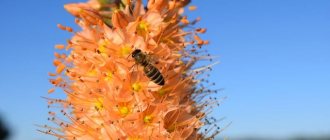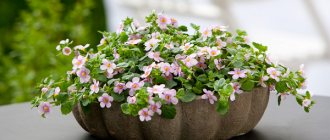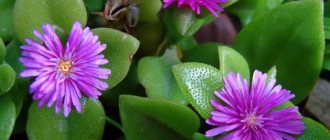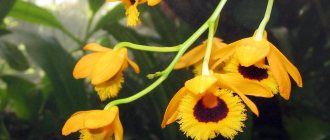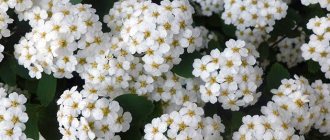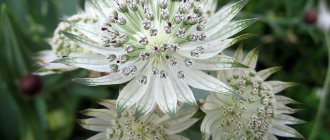Varieties and varieties of chrysanthemums
This is a flower with an interesting history. To this day, debates continue about where it came from. A definite opinion is that this is an overseas miracle, possibly arriving from Japan or China.
Knowledgeable people say that garden (bush) perennial chrysanthemums require competent planting and care. Both in the garden and in home pots, many factors will influence the beauty of the flower.
Garden chrysanthemum can be miniature (10-15 cm) and very tall - up to two meters. This perennial plant was combined into groups according to certain characteristics and characteristics.
Diseases and pests of chrysanthemums and methods of control
Spider mites
With proper care, the plant is rarely affected by pests and almost never gets sick. Nevertheless, the bushes need to be systematically inspected in order to identify the problem as early as possible and begin to treat the plant.
The threat to garden chrysanthemums is:
- Spider mites are pests that suck sap from plants. It can be detected by cobweb formations on the back of the leaf. If the leaves of a chrysanthemum become gray-brown, begin to darken and fall off, then most likely a mite has settled on it. The plant must be treated with specialized chemicals.
- Leaf nematodes - the disease is manifested by deformation of the leaves and their darkening between the veins. In this case, it is necessary to change the soil and trim the damaged areas.
- Verticillium is an infectious disease that penetrates through the roots. Therefore, the leaves begin to turn yellow and wither from the bottom of the bush. Spraying with specialized biological products will help in the initial stages.
- Powdery mildew first affects the leaves and buds, on which a white coating appears. The affected parts of the plant are removed, and the bush itself is treated with Bordeaux mixture.
Inflorescence sizes
Usually the flowers themselves catch the eye, not only by their number on the bush, but also by the color and size of the inflorescence. Perennial chrysanthemums are divided into three groups according to flower size:
- Small-flowered. They are called Korean. Such plants can be double or simple. One bush is decorated with many flowers with a diameter of 2-10 cm. The height of the bush is from 30 to 120 cm. The shape of the leaves resembles oak leaves. Plants are frost-resistant and not picky about soil composition. The appearance of the first flowers pleases the eye already in early September and until frost.
- Gray-flowered. They are also called decorative. They are grown both for garden decoration and for cutting. Perfectly adaptable to growing in pots at home. They look great on terraces and will decorate any balcony or loggia. The bushes grow up to 30-70 cm, and the diameter of the inflorescences is from 10-18 cm.
- Large-flowered. These are Indian plants, they are tall and look impressive. There is a large flower on a long stem about 80-120 cm high; its diameter can exceed 25 cm. This species is more delicate and does not tolerate frost. It is grown in greenhouses for bouquets.
Most people have cold-resistant chrysanthemums growing on their plots; they are popularly called oaks - this is a small bush chrysanthemum. Flowers are very unpretentious and can boast of their varied palette, as well as shape and size. Depending on the variety, they will bloom from 20 to 60 days, all of them are beautiful in their own way. Few people will be indifferent to such a gorgeous gift from nature.
Bush chrysanthemums (garden): varieties, planting, care and propagation
Delicate and beautiful chrysanthemums are the last autumn flowers, decorating empty flower beds with their lush, bright beauty until the first snow falls.
The most interesting is the perennial bush chrysanthemum. Today we will talk about its types, as well as how to plant it correctly and how to care for it.
PERENNIAL SHRUSH CHRYSANTHEMUMS
Perennial bush chrysanthemums: description . Bush chrysanthemum is a beautifully flowering, rhizomatous, herbaceous perennial from the Asteraceae family. Currently, more than 200 species of perennial bush chrysanthemums are known. Most of them are heat-loving and can only grow in the southern regions.
However, there are also several frost-resistant species that tolerate our cold winters well. The most frost-resistant is the Korean chrysanthemum, which can withstand frosts down to -35 degrees.
Bush chrysanthemums are highly branching bushes ranging in height from 35 cm to 1.5 m. Thin branching pubescent shoots, densely covered with silvery stem leaves, extend from the thick central stem.
Inflorescences are baskets consisting of many flowers of different sexes.
According to the size of the flowers, the garden bush chrysanthemum can be small-flowered, medium-flowered and large-flowered.
The small-flowered chrysanthemum has a bush height of 30 to 45 cm. The diameter of the inflorescence is from 3 to 8 cm.
For a medium-flowered chrysanthemum, the height of the bush is from 45 to 75 cm. The diameter of the inflorescence is from 10 to 19 cm.
In a large-flowered chrysanthemum, the height of the bush can reach 1.5 m, and the diameter of the inflorescence can be up to 30 cm. Large-flowered chrysanthemum, as a rule, does not overwinter well in the open ground, even under a warm shelter, so it is mainly grown in greenhouses for cutting.
Frost-resistant species of spray chrysanthemum . In the central and northern regions of our country, two types of bush chrysanthemum can be grown: Korean and multiflora .
Korean chrysanthemum . A very frost-resistant type of bush chrysanthemum, which includes about a hundred beautiful low-growing (30 to 40 cm in height) and tall (60 to 90 cm in height) varieties with a wide variety of single- or multi-colored flowers of small or large flowers.
The shape of chrysanthemum flowers can be single-row or multi-row, double or semi-double, pom-pom or anemone-shaped.
In large-flowered double varieties, seeds are practically not formed due to the small number of tubular flowers in the inflorescence-basket.
According to the timing of flowering, Korean chrysanthemums can be early or late.
Early varieties of Korean bush chrysanthemum bloom at the end of July, late varieties - in mid-August.
The flowering of bush Korean chrysanthemums continues until the arrival of winter.
Chrysanthemum multiflora . This is a very decorative species that grows in the form of a spherical bush with a height of 20 cm (short) to 70 cm (tall).
When flowering, multiflora chrysanthemum bushes are completely covered with very bright inflorescences-baskets of various colors.
This type of perennial bush chrysanthemum has lower frost resistance (up to – 26 degrees), so they require warm shelter for the winter.
Popular varieties. The following are considered the best varieties of bush chrysanthemum.
Anastasia . Frost-resistant, tall (up to 70 cm) variety of semi-double Korean chrysanthemum. Flowers up to 6 cm in diameter are pale pink in color with a bright yellow core.
Blooms in mid-July and blooms until snow falls. It has increased resistance to diseases and pests.
Heather beads . A very beautiful terry variety of medium-sized (up to 50 cm) Korean chrysanthemum with large bright red flowers, the petals of which have an original tubular shape.
The core of the flowers is bright yellow. Flowering begins in mid-August and continues until winter.
Lelia . The earliest variety of Korean chrysanthemum. Flowering begins at the end of June and continues until the end of October. The flowers are small (up to 3 cm in diameter), double, bright pink.
The flowering is so abundant that due to the many flowers on the bush, up to 70 cm high, the leaves are almost invisible.
One of the most unpretentious and frost-resistant (up to – 37 degrees) varieties.
Autumn kaleidoscope . Terry frost-resistant variety of Korean chrysanthemum up to 60 cm high with large (up to 6 cm in diameter) bright orange flowers.
Flowering is abundant. Lasts from mid-July to the end of October.
The leaves are emerald green and contrast very nicely with the flowers.
Daphne Pearl . An amazingly beautiful, low-growing (25 cm in height) frost-resistant variety of terry chrysanthemum multiflora. Flowers up to 3 cm in diameter have an unusually delicate pink color.
Blooms in mid-July and blooms until mid-September. This variety is very good for creating borders.
FEATURES OF LANDING
Choosing a location . Since the bush chrysanthemum blooms in late summer and autumn, it naturally needs as much sunlight as possible.
Therefore, choose a place well lit by the sun to plant it. Chrysanthemum is afraid of drafts and cold northern winds, so think about how to protect it from them, especially in winter.
The roots of chrysanthemum are quite powerful, so the plants will not tolerate close groundwater and flooding. In this regard, we recommend that you plant bush chrysanthemum in high flower beds (50 - 60 cm high).
Landing dates . Perennial bush chrysanthemums take root well both in spring and autumn planting. In spring, we recommend that you plant them in mid-May, when the soil warms up to +15 degrees.
The best time for autumn planting of bush chrysanthemum is from the end of August to the end of September.
Soil preparation . Perennial bush chrysanthemums love light, loose, fertile, neutral soils rich in organic matter. They will not grow on heavy clay and acidic soil.
Pre-treat acidic soils with dolomite flour, adding it to neutralize it before digging at the rate of 2 kg per 5 sq. m. m plot.
When forming a flowerbed, apply the necessary fertilizers to it (per 1 sq. m): 2 buckets of compost (or rotted manure) and leaf soil, a bucket of sand, 2 tbsp. spoons of superphosphate and 1.5 tbsp. spoons of potassium sulfate.
Features of landing . For low-growing varieties of bush chrysanthemum, dig planting holes with a depth and diameter of 30 cm at a distance of 20 cm from each other. For medium-sized and tall people – depth and diameter of 40 cm at a distance of 40 – 50 cm.
At the bottom of each hole, lay drainage made of fine gravel and sand in a layer of 6–8 cm.
To fill the planting holes, prepare soil consisting of compost, fertile soil and sand in a ratio of 2:2:1. Add 2 tbsp to each hole. spoons of wood ash.
After planting, water all the plants well with warm water heated in the sun (1 watering can for each bush) and mulch the entire flowerbed with straw or hay in a layer of 4–5 cm.
CARE OF BUSH CHRYSANTHEMUMS
Watering chrysanthemums . Perennial bush chrysanthemums are strong and powerful plants. For normal growth and lush flowering, they need a lot of water. In cool, dry summers, water chrysanthemums twice a week, using two watering cans for each plant.
In hot weather, water more often. It is important that the soil under the bushes is always moist and loose, but without standing puddles, otherwise the roots of the plants will suffer, since they will not receive oxygen from the air.
To water chrysanthemums, use only water heated in the sun (not lower than +20 degrees)!
Feeding chrysanthemums . Perform the first feeding of perennial bush chrysanthemums in early spring, immediately after the snow melts. At this time, plants need nitrogen most to give a powerful boost to shoot growth.
We recommend that you use a urea solution for the first feeding (2 tablespoons per 10 liters of water - 5 liters for each bush).
At the end of June, feed the chrysanthemums with mullein solution (in a ratio of 1:10) at the rate of 1 watering can per 1 square meter. m flower beds.
At the end of July, give the chrysanthemums potassium-phosphorus fertilizers (1.5 tablespoons per 1 sq. m of flower bed, for shallow loosening). This should ensure lush flowering.
In October, add some ready-made mineral complex for autumn feeding of ornamental plants to the flowerbed with perennial bush chrysanthemums, strictly following the dosages indicated on the packages.
Formation of bush chrysanthemum . Perennial bush chrysanthemum requires shaping.
In spring, pinch all ends of the shoots above the 8th leaf after it has formed. Then they will begin to produce side shoots. And the bush will be much more magnificent. After these shoots reach 10 cm, pinch them too. This way you can give the chrysanthemum bush a rounded shape.
During flowering, immediately remove dried inflorescences to allow the second-order ovaries to bloom, because they produce the largest and brightest inflorescences.
Partially remove third-order ovaries, because not all of them will have time to bloom.
After flowering has finished, trim all stems of the perennial chrysanthemum bush to a height of 12–15 cm.
Shelter for the winter . After trimming the bushes, cover the entire ground under them with spruce branches, laying it in two layers “needles up” so that mice and voles do not reach the roots. This should be enough for the plants to overwinter well.
PESTS AND DISEASES
Diseases of perennial chrysanthemums . The most common diseases of perennial bush chrysanthemums are powdery mildew, gray rot and rust.
Most often they infect plants due to improper care, and primarily due to waterlogging of the soil due to excessive watering or due to lack of sunlight.
In any case, we recommend that you treat chrysanthemum bushes with 1% Bordeaux mixture twice during the summer season - in spring (mid-May) and autumn (in September) for prevention.
Chrysanthemum pests . The most common pests are aphids, thrips and spider mites. Double treatment of bush chrysanthemum with the biological product “Inta-Vir” helps against damage by these pests.
In case of a strong “invasion” of insect pests, treatment with a solution of the chemical preparation “Fufanon” should be used.
ERRORS IN CARE
What problems do gardeners face when growing chrysanthemums? The most common problems that a gardener may encounter when growing perennial bush chrysanthemums are drying out leaves and lack of flowering.
Drying leaves indicate insufficient watering or infection with fungal diseases. Make sure that the soil under the bushes is always well soaked to the depth of the root layer (45 - 50 cm).
If signs of fungal diseases appear, treat chrysanthemum bushes with a solution of the drug “Fundazol” in accordance with the dosages. indicated on the packaging.
Lack of flowering can be caused by a lack of phosphorus and potassium. It will be replenished by adding superphosphate (2 tablespoons per 1 sq. m) and potassium sulfate (1.5 tablespoons per 1 sq. m) under shallow loosening of the soil around the plants.
Another reason why chrysanthemums do not bloom may be planting in the shade, the formation of soil crust under the bushes and the presence of weeds in the flowerbed.
Therefore, strictly follow all the necessary agrotechnical practices when caring for chrysanthemums, which we described above.
ADVICE FROM EXPERIENCED GARDENERS
Lush flowering, normal growth and health of bush chrysanthemums primarily depend on the choice of planting site: in a sunny, elevated area, well protected from drafts.
Water abundantly from planting until budding, and after flowering begins, reduce it by half. Then the flowers will be larger. Otherwise, the green mass may grow greatly.
Regularly remove faded heads and wilted leaves, especially at the base of the bush. This will prolong flowering and make it more lush.
Water bush chrysanthemums at the root so that water does not get on the leaves and flowers, otherwise sunburn may appear on the plant during the day from droplets of moisture.
Water only in the morning or evening hours.
Cut off some of the buds on the side shoots, then the central inflorescences will be larger and brighter.
Lush flowering of perennial bush chrysanthemums in one place can last no more than 5 years. After this, divide the bushes and transplant the divisions to a new location.
THE BEST CHRYSANTHEMUM VARIETIES FROM OUR COLLECTION
We told you about spray chrysanthemums,
In conclusion, we present to you the best varieties of perennial bush chrysanthemum from our unique collection of ornamental plants.
The best varieties of chrysanthemums
Korean chrysanthemum: Briar beads, Autumn kaleidoscope, Lelia, Anastasia.
Chrysanthemum multiflora: Daphne pearl.
Read more about these varieties on our website or in the AUTUMN 2022 Catalog.
And you can order them from us today!
Height and shape of the bush
When the leaves have already fallen in the fall, the soil in the garden is gray, and among the dull landscape you can see a green bush with bright flowers - it’s amazing. Based on the shape and size of the bush, plants are divided into three groups, each of which has a huge number of varieties.
- Tall. Very tall stems are supported with a frame in the form of pegs or metal mesh; they are installed immediately during planting of the bushes. Growing up, tall flowers planted in a group turn into a picturesque hedge.
- Medium height. Such bushes look good in flower beds, near fences and in gazebos.
- Borders. Small bushes no higher than 30 cm long. The most beloved and beautiful variety of spray chrysanthemum. The bushes grow in the form of a ball, generously strewn with flowers.
The beautifully flowering plant is one of the first to appear in the spring, although the flower itself blooms only in the fall. Small silvered leaves on the bushes will decorate any flower bed.
Storing chrysanthemums in winter
Large-flowered varieties of chrysanthemums, dug out of the ground for the winter, are stored in greenhouses or basements at a temperature of 8-10 degrees Celsius. In order for the plant to overwinter better, it is advisable to cover its root system. A layer of sand, peat, humus or a dense layer of leaves will do just fine. It is easier to deal with small-flowered varieties (white and lilac in the photo), for which for the winter, without digging, we must cover the root system with any non-woven material, since severe frosts can damage the roots of the plants, which will subsequently lead to their death.
Chrysanthemums are decorative for up to 6 years, then their inflorescences become smaller. To prevent this from happening, every 4 years we transplant the plant bushes in our dacha to a new location.
Shape of flowers
If you look closely at the inflorescences, you will notice that they are all different in shape. There are five different types of flower shapes in total:
- In the form of pompoms. The petals of the flower are collected in the shape of a ball and resemble a pom-pom.
- Anemoids. Small flowers similar to anemones. In them, large petals are collected in one, two or three rows at once.
- Single-row and double-row inflorescences, framed by flowers, like tongues, in the middle of which there are small flowers in the form of tubes. The border of petals can be arranged in two rows.
- The flowers consist of three rows of petals arranged around a central one, appearing semi-double.
- Double with lush flowers, very similar to semi-double, different in appearance and shape.
Chrysanthemum is a southern plant, and not many species have adapted to the conditions of the central Russian climate.
Main varieties
A popular variety in the perennial chrysanthemum category is Early Yellow. In its external characteristics it is similar to the Japanese anemone. Bush chrysanthemums are perfect for cutting, forming bouquets, and arranging a garden landscape. All photos with her turn out juicy and rich.
Variety Early Yellow
The so-called spherical chrysanthemum has the shape of a ball due to the very dense fit of the petals. Bristly white chrysanthemums were able to embody all the lightness and tenderness of autumn flowers. Their petals are unusually thin, slightly curled. And if you look closely, they look somewhat like brushes.
Globular variety of chrysanthemums
The pompom pink chrysanthemum has a simply perfect spherical shape. The shades are always vibrant and the terry texture is surprisingly thick. Even in the most extreme conditions, the crop will still bloom!
Chrysanthemum pompom
Semi-double chrysanthemum flowers are one of the most numerous groups. They are characterized by a wealth of colors and shapes and almost always an open middle. The shades and structure of the petals can be the most unexpected.
Semi-double chrysanthemum
Simple varieties are characterized by the same simplified, uncomplicated shapes and colors. The inflorescences are light, graceful, somewhat reminiscent of a garden chamomile.
Simple chrysanthemum
The convex shape of the core of the inflorescence and the pleasant, fragrant smell indicate that this is an anemone-like variety.
You rarely see spoon-shaped chrysanthemums in the garden. They are considered a very rare variety. How is the flower connected to the spoon? It's simple - each petal looks like a teaspoon.
Spoon chrysanthemum
Landing Features
Large-flowered varieties grow better where it is warm or in greenhouses; hardy Korean chrysanthemums can be severely damaged by frost in a winter without snow. There must be drainage in the soil. Garden perennial bush chrysanthemum does not like wet wintering. Planting and care require special attention, since the bushes are short-lived and should be renewed every three years.
Features of care
Chrysanthemums grow well when there is plenty of light and planted in fertile soil. They love the sun, moisture, and are afraid of drafts and cold winds. Flowers can withstand winter if there is no damage to the cuttings. You should not ruin or disrupt the normal growth of the flower during low temperatures - the stems are afraid of cold and high moisture. They do not like flowers when they are planted close to each other. Systematic feeding of chrysanthemums and stopping it during ripening will produce good and high-quality seeds. Do not forget about the temperature regime, this is quite important.
By following all the rules of care, you can get healthy and beautiful inflorescences that will please the eye.
Soil preparation
In open ground, species adapted for frosty winters grow safely - these are zoned varieties grown from seeds; they winter well, and then grow and bloom.
Before planting, you should choose a location. Flowers do not like shade, otherwise the plant will reach for the sun and will not have the strength to bloom. The area should be windless and moderately damp, without stagnant water. The soil for bush chrysanthemum must meet certain requirements:
- Soft fluffy soil should not contain clay; any mechanical composition will be suitable.
- Good air and water circulation is required.
- Peat and fertilizers are added to the planting hole to make the soil slightly acidic and fertile.
For digging, 20 kg of humus, 30 g of urea and 100 g of superphosphate are introduced per square meter. If there is heavy soil, sand is sprinkled for drainage. It is forbidden to add fresh manure under chrysanthemums.
Peculiarities
There are many varieties of chrysanthemums, each of which is good in its own way. The most popular among them are: orange-scarlet “Apollo”, burgundy “Romenta”, cream “first snow”, “lilac fog”, pink “Heba”, yellow “Svemba”, “multiflora”. But despite such diversity, the famous Korean chrysanthemum, with inflorescences reminiscent of an indoor bride flower, has been in greatest demand among gardeners for many years. In the photo you can see what Korean chrysanthemums and other popular varieties look like. As you can see, every gardener can find a plant to suit his taste: with large and small flowers, perennial and annual, variegated and muted.
As for Korean chrysanthemums, they have many advantages:
- resistance to low temperatures;
- compatibility with other plants;
- beauty;
- abundant, long-lasting flowering that lasts until the first frost.
If you start growing chrysanthemums in open ground, they will delight you with their flowering in August and will bloom throughout the fall. This plant is not afraid of frosts down to seven degrees below zero.
Residents of the northern regions mistakenly believe that chrysanthemums cannot be placed in open ground. However, in fact, these flowers winter well if they are properly prepared. To do this, you just need to cut off the stems, leaving only stumps no more than 15 cm high. Then they should be covered with peat, and covered with fallen leaves and spruce branches on top.
Recommendations for planting
Chrysanthemums are sold in pots in the fall so you can see how they bloom and what species they belong to. Having purchased a flower you like, you should replant it. But how to plant bush chrysanthemums? It is better not to do this in the fall. The flower devotes all its energy to flowering, but does not have any left for rooting, so the bush may not survive in winter. It is better for it to remain in the pot and overwinter in the basement or cellar. In spring (this is the best time to plant chrysanthemums), you should choose a place and plant a flower there.
The best months are the end of April and May (southern regions), and in regions further north you should wait for the final warming without frost.
It is advisable to plant bush chrysanthemum as follows:
- Sand or drainage in the form of pebbles should be added to each hole.
- Large bushes are planted at a distance of half a meter from each other, small ones - 25-30 cm. There should be 50 cm between rows.
- Avoid deep digging into the soil.
- Tall bushes need additional support; it should be installed immediately and the plants should be tied up.
- For better adaptation, it won’t hurt to spray the flower leaves with Epin.
- When waiting for frost, the bush is covered with non-woven material.
Proper flower care will ensure good flowering and health of chrysanthemums.
Brief description of cultivation
- Landing . In April, seedlings are sown, and in May, the seeds are sown in open soil. Sowing can be done before winter, but no later than 15 days before the first frost.
- Bloom . In the last weeks of summer and autumn.
- Illumination . Needs plenty of bright sunlight.
- Soil . The land should be fertile, dry, well-permeable, neutral or slightly acidic, loamy.
- Watering . Needs abundant watering.
- Fertilizer . Three times during the season, for this they alternately use organic and mineral fertilizers in liquid form. Fertilizers are applied to the soil for the first time seven weeks after planting.
- Reproduction . Annual species and varieties are propagated only by seeds, and perennials - mainly by cuttings and dividing the bush.
- Harmful insects . Nematodes, aphids, meadow bugs.
- Diseases . Gray rot, rust, septoria, powdery mildew, bacterial root canker.
Planting chrysanthemums in autumn
If you can’t wait until spring, then you should strictly adhere to some recommendations so that the flower does not die in the cold:
- The best time to plant a flower is the end of September or the first half of October.
- You should wait until the bushes have flowered, otherwise there is a high probability that they will not be accepted.
- For planting, it is better to give preference to bushes on which basal shoots are already visible.
- Planted before frost so that the seedlings can gain strength to withstand the cold.
- Be sure to fertilize the soil with peat or compost, cover and insulate the bush before frost.
By applying such simple manipulations, you will have hope that next year the chrysanthemums will delight you with their blooms.
Care and fertilization
The plant loves water. Water varieties with large leaves more often than those with small and hard leaves. If night frosts persist after transplantation, cover the flowers with film. In the first 14-20 days, create shade from fabric or branches. Mulch with pine needles.
When the central shoot grows to 10 cm, remove the top. Make the second pinch when the side shoots reach 11 cm. Pick off dried flowers for long and lush flowering.
During the growing season, feed with manure - 1 liter. for 10l. water or “Konevin” for strong roots. Fertilize with nitrogen while the leaves are growing, such as chicken manure. .
In the fall, after flowering and with the arrival of frost, cut the stems to the ground, hill them up and cover them with leaves, peat or spruce branches. Such a “blanket” will help the bush to overwinter even in harsh conditions, for example, in Siberia or the Leningrad region. I advise you to dig large-flowered varieties into a pot for the winter until spring.
Top dressing
Chrysanthemum needs mineral and organic fertilizer. In the first half of the growing season, the plant is fed with mineral fertilizers with a high nitrogen content; in the second half, phosphorus and potassium should predominate. Dissolve 40 g of fertilizer in 10 liters of water. For 2 sq. m of landings this should be enough.
Be sure to feed the bush chrysanthemum 3 times a season with an infusion of cow manure in a ratio of 1:10. You will need 1 liter of solution per bush. It should be borne in mind that all fertilizers are carefully combined with watering. Afterwards the soil is loosened.
Caring for chrysanthemums in the open ground
In one place, without transplantation, chrysanthemums grow for 2–3 years. Then they need to be transplanted to another place. In addition, the bush is divided every 3 years. Throughout the growing season, the soil around the chrysanthemums in the flower bed needs to be weeded and loosened. At this time, the root system and underground shoots are actively developing, due to which the bush is formed. Then the loosening is stopped, otherwise there is a risk of damage to the young growing growth.
Weeding and loosening are carried out every 8-10 days. Gardeners believe that one loosening is equivalent to two waterings. It is especially useful for loosening after rain, watering and fertilizing.
Despite the fact that perennial chrysanthemums can easily tolerate drought, during the growing season they need a lot of moisture. At this time, you need to water them generously, 3 times a week. During the period of bud setting and flowering, you can practice “dry” watering - careful and shallow loosening with hilling and unhilling of bushes. Such actions will have the greatest effect in rainy or humid weather.
It is better to water chrysanthemums in the evening, after 18 hours. You should water it abundantly, so that the soil is saturated with water to a depth of 20-25 cm, while trying to prevent water from getting on the leaves.
Mulching with a thin layer of 3 cm is very useful. Peat, crushed tree bark, pine needles or straw are used as mulch. Such a “carpet” allows you to maintain the looseness and moisture of the soil for a long time, slow down the growth of weeds, prevent pathogens of fungal infections from getting from the soil onto the bush along with water splashes during rain and watering, and create the necessary conditions for the successful development of the root system and the plant as a whole.
Flower propagation
Overseas flowers from the south can be propagated in different ways. There are three ways:
- Dividing the bush. The bush is divided in the spring after all frosts. To ensure that flowers produce inflorescences well, the bushes are divided every three years. The plant is carefully dug up, the roots are cut, and the bush is divided into small bushes, which are planted in prepared holes and watered.
- Seed. Sowing is done in late spring. Each future plant is assigned a hole; the distance between them should be at least 25 cm. 3-4 seeds are buried in the hole. And at the end of summer you can wait for the first flowers.
- By cuttings. This is the best way to propagate bush chrysanthemums. Under the leaf pattern, a cutting is cut with 4-5 leaves measuring 5-8 cm in size. The cutting is placed in the prepared container. When the root system appears, it is advisable to transplant the cuttings into separate pots. Only after frosts have passed are young chrysanthemums planted in open ground.
Not all species grow in garden plots; there are flowers that feel comfortable in the house.
Chrysanthemum propagation
Experienced gardeners propagate chrysanthemums: by dividing the bush, cuttings, and seeds.
Propagation by cuttings
By propagation by cuttings, all the characteristics of the variety are preserved. Such plants turn out to be resistant to diseases, sudden changes in temperature, and diseases. They delight owners with lush, abundant and long-lasting flowering.
Caring for a plant at home
Indoor bush chrysanthemum is small in size. A bush is formed, and you get cute balls strewn with flowers. For good flowering, these plants only need a short daylight hours. But this does not mean that the plant should be in the shade.
At home, the chrysanthemum is placed on a balcony with good lighting. Potted chrysanthemums prefer cool weather, especially when the flowering time begins. The higher the air temperature, the faster the flowers will dry out and wither.
Therefore, even the smallest specimens of bush chrysanthemum in a pot are exposed to fresh air. The air temperature should not be less than 10 degrees and more than 25. Planting, caring for and feeding chrysanthemums at home is not particularly different from planting outdoors. But in winter you cannot keep a flower in the room.
How to grow chrysanthemums in the garden
Keep in mind: these flowers do not tolerate moisture retention and even the slightest darkening very well. So chrysanthemums should be planted in a sunny, preferably slightly elevated place. This way you will be sure that the flower shoots will not stretch too much and will not begin to bloom earlier. Just remember that you should never allow the soil to dry out, since this plant has a shallow root system.
The ideal option would be to grow chrysanthemums in loose, permeable soil. Moreover, the ratio of nutrients in it should be optimal. So, if your site is dominated by infertile dense soil, before planting chrysanthemums it should be fertilized with compost, peat or rotted manure.
But you shouldn’t overuse useful additives: they will grow faster, but their flowers will not be as beautiful. It is very important to provide chrysanthemums in the garden with good drainage. To do this, mix the soil with a small amount of coarse sand. These flowers grow best in a slightly acidic and neutral environment.
Planting chrysanthemums should be planned for a rainy or cloudy day. If the weather outside is sunny and hot, try to plant the cuttings in the ground early in the morning or late in the evening, when there is almost no sun.
How to grow chrysanthemums? First of all, dig holes 35-40 cm deep, fill them generously with water and place the prepared drainage inside. Before this, it is advisable to mix it with vermicompost in a ratio of 20 to 1. Then place the cuttings in the holes and carefully cover them with earth. Since the roots of chrysanthemums extend parallel to the ground, they cannot be placed very deep. If you choose a tall variety of flowers, be sure to consider creating a support for them.
Immediately after planting chrysanthemums, the first pinching should be done - cutting off the growing point from the flower. After three weeks, you will need to do another pinching - break off the top of the shoot, on which several nodules have formed.
How to grow chrysanthemums in the garden? In the first days after planting, it is necessary to organize artificial shade for the seedlings, because at this time bright sunlight is contraindicated for them. For this, it is best to use non-woven material. In this case, the canopy should not touch the cuttings.
Caring for house flowers in winter
The flower pot is placed in a pantry or cellar, where the temperature does not rise above 5 degrees. At this time, the flower is not watered abundantly and is not fed at all. It is treated with antimicrobial agents.
With the onset of spring, the plant is exposed to the air, watering is increased, if the flower needs to be replanted, it is replanted, and in April they begin to feed it. And already in September, flowers will appear on the bushes again.
There are different shades of beautiful flowers; some like pink, some yellow, and some purple bush chrysanthemums. They are all beautiful in their own way and look very elegant.
How often should chrysanthemums be watered?
Young, newly planted plants are most sensitive to lack of moisture. Regular watering is necessary before the second pinching procedure. Chrysanthemum is quite drought-resistant, but without additional moisture during the hot period, the lower part of the shoots becomes woody. Such a plant slows down in growth, blooms worse, and its immunity is reduced.
An adult plant requires regular watering from the beginning of the growing season, for the formation of flower buds and until the buds appear. In order to avoid moisture evaporation, it is recommended to mulch the root area.
For mulching you can use:
- peat;
- pine litter;
- crushed bark;
- dried grass.
Mulching the soil helps improve its fertility
You can loosen the soil around the bushes only for the first month after planting, so as not to damage the root system, as well as basal shoots.

